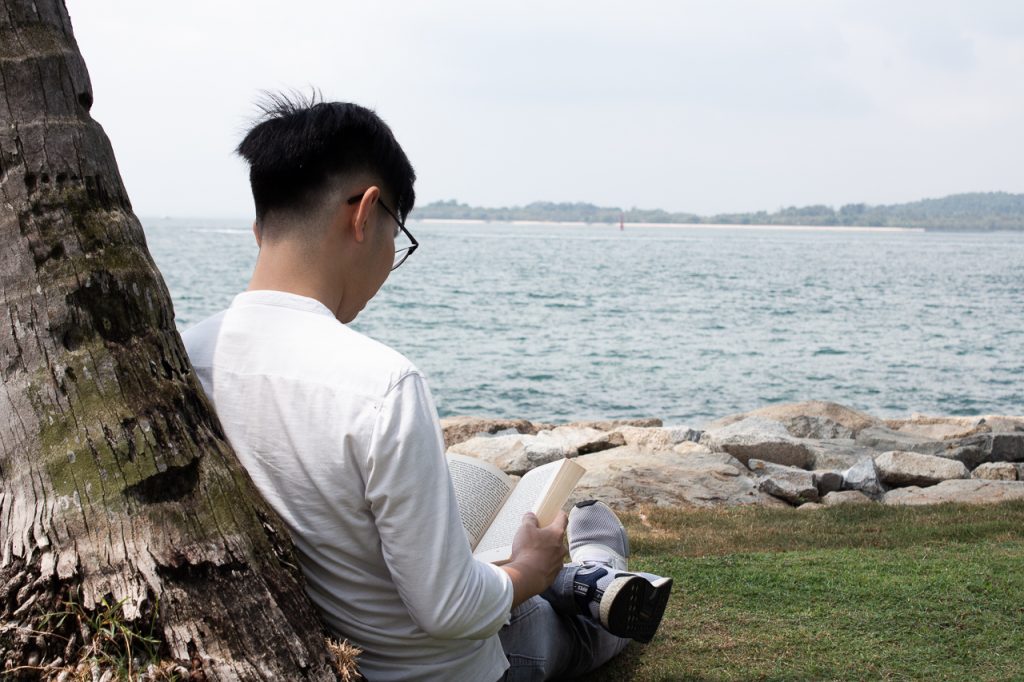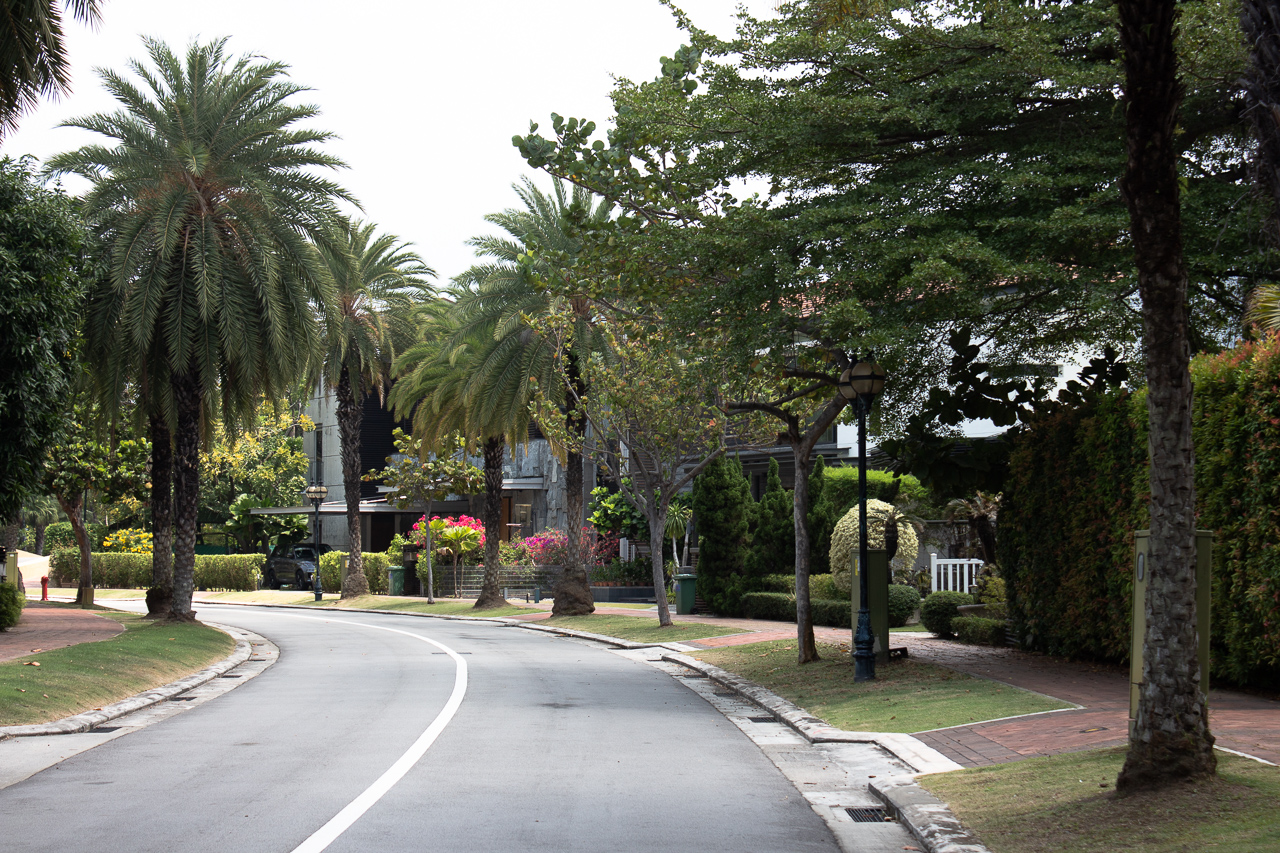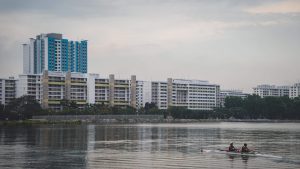Sentosa. Home of ZoukOut (RIP), the orientation Beach Day, and the one that replaced Escape Theme Park. But it’s also home to hundreds who live in the niche of Sentosa Cove.
To understand how it feels to be there, close your eyes. Bring your fingers to your temple to sculpt your anger as you picture peak hour Singapore. Channel your indignation as you imagine suffocating in a sweaty, oily morass of humans.
Sentosa Cove is the direct opposite of that.
“It feels like a holiday everyday,” Joshua Rawlings tells me. “It’s very lavish and relaxing you know? It’s close to the ocean and it’s very open. Very breathable, away from the hustle and bustle of the city.”
Australian-born and studying in Spain, Singapore has been Joshua’s home country for over 10 years. His family moved to Sentosa Cove in early 2015.
“It is very extravagant,” he laughs when I ask him what the average Singaporean would think of the place. “Never anywhere else in the world have I seen such a small area with such a high density of sports cars and unbelievably massive, modern houses.”
Joshua continues to describe architecture straight out of a present day Great Gatsby. One particular billionaire seems to have a penchant for the capricious: of the five houses he owns, one of them resembles a pirate ship, purportedly designed by people who worked on Pirates of the Caribbean. It houses movie props straight from Disney.
But the pièce de résistance of his residential empire is his “Egyptian-themed spaceship house,” as Joshua describes. It functions as a personal art gallery for the billionaire, accommodating works as priceless as a Picasso.
“Next to each piece there’s a button. If you press it, you’ll hear Morgan Freeman narrating about the piece,” Joshua grins. “Isn’t that cool?”
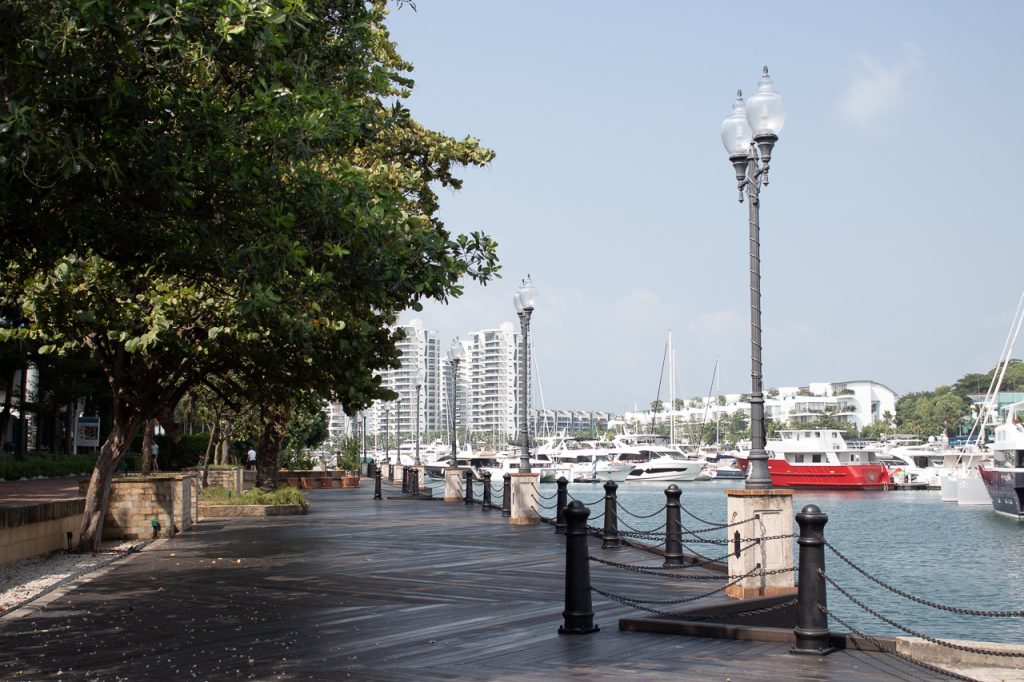
This disparity is curious, because you’d expect the affluence to be evenly spread. But I guess there’s always going to be high-end and budget versions of the same thing.
We’ll let you fester in your imaginations of South Cove’s opulence (or you could just use Google) because we’re setting our sights on North Cove instead. It’s far more intriguing to unearth the secrets of the path less travelled.
North Cove is essentially a singular road—Ocean Drive—shaped like an elongated horseshoe. Landed houses and condominiums flank both sides of the street, and you drive from one end of the horseshoe to the other where you can u-turn to head back. Along the way, there are three junctions that diverge into tiny islands that fill up the middle of the horseshoe.
At first glance, this is the quintessential Singapore Dream. Every abode is a massive upgrade from the 80% of our country living in HDB flats, and there are more sports cars than people along the streets. Each backyard opens up into stretches of water leading into the ocean, with many households having docked boats just waiting for an SG InstaBabes Yacht Party.
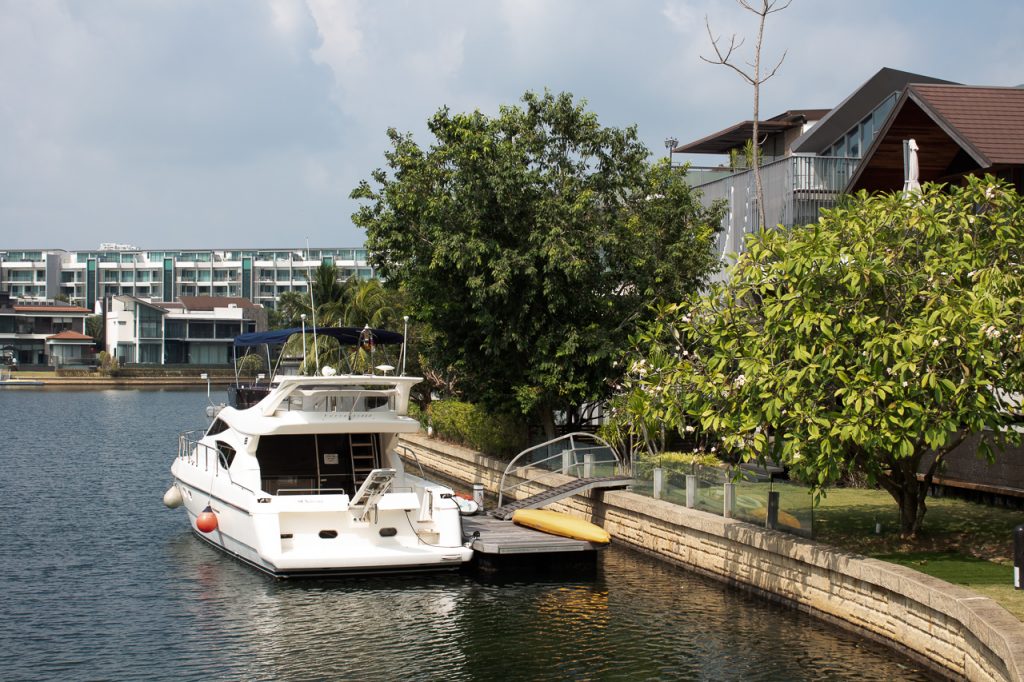
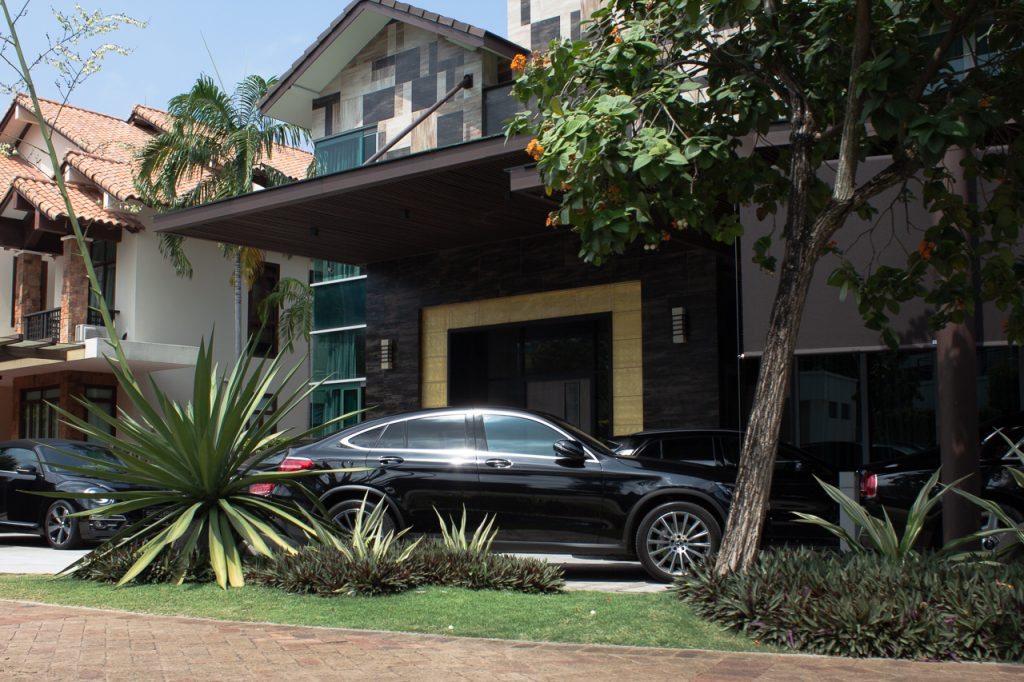
There’s a startling amount of unoccupied houses, construction complete but unfurnished. Wires dangle from unfinished porch ceilings, letterboxes remain dusty with a tinge of rust, leaves and twigs float on empty swimming pools. Even North Cove’s condominiums, as decadent as they seem, look like failing 5-star hotels weathering a slump.
Sentosa Cove on the whole has a dismal occupancy rate of 70%, but if South Cove is a lot livelier than the North as Joshua claims, the numbers in this neighbourhood have to be lower.
This is a far cry from its original vision. Once touted as “the world’s most desirable address”, it was aggressively marketed towards wealthy foreigners. Being the only place in Singapore they could own landed property, celebrities and business tycoons from every continent flocked over in the early-mid 2000s to have a piece of this prestigious oceanfront marina.
But various factors have led to the Cove’s price outshining its allure. There’s the 2008 financial crisis, and various property cooling measures leading to a stagnant property market. But the ‘additional buyer’s stamp duty’ is the final nail in the Cove’s vampiric coffin. Introduced in 2011 at 10%, it’s an additional tax on properties bought by foreigners. It has since been increased to 20% after July 2018.
Even amongst Sentosa Cove’s existing residents, the Cove is just another of their many holiday homes. Unlikes the rest of us plebeians who hold only one property at any one time, these multi-millionaires rotate from house to house throughout the year. Factoring that in, no wonder there are fewer people living in the Cove at any one time than in Pulau Hantu.
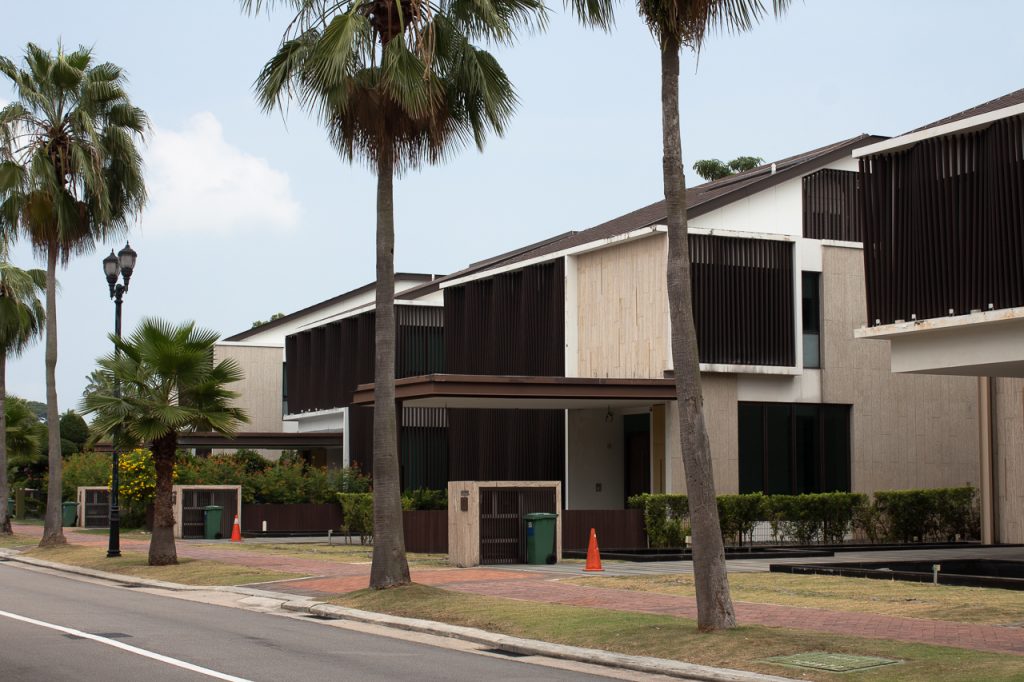
Except there’s no one around.
To live in the North Cove is to be incredibly lonely. Too much of a good thing can be bad, and the key to life is balance, as any kungfu master will tell you. Sure, you might think some peace and quiet would be suitable for retirement, but can you imagine growing up in a ghost town?
Imagine that your neighbours either don’t exist or come back for only two months each year. Imagine walking to the beach and just seeing empty house after empty house, and having no one to hang with. Imagine your daily commute to the mainland in your Aston Martin and a silent chauffeur with slicked-back hair and passing by a neighbourhood haunted by absence.
Can you imagine that being your whole world?
While we were there, I rolled down my windows as much as I could because I wanted to experience Sentosa Cove for what it is. You know, soak in the aura of the bourgeoisie and live vicariously through the sights and sounds, a nice distraction from life as a starving writer.
But it’s the North Cove’s distressing silence that remains with me even days after. I park my car and cut my engine and find the ensuing vacuum amplifying every little detail in the soundscape.
A Deliveroo bike. A dog barking in the distance. The sea teasing the palm trees with its breeze.
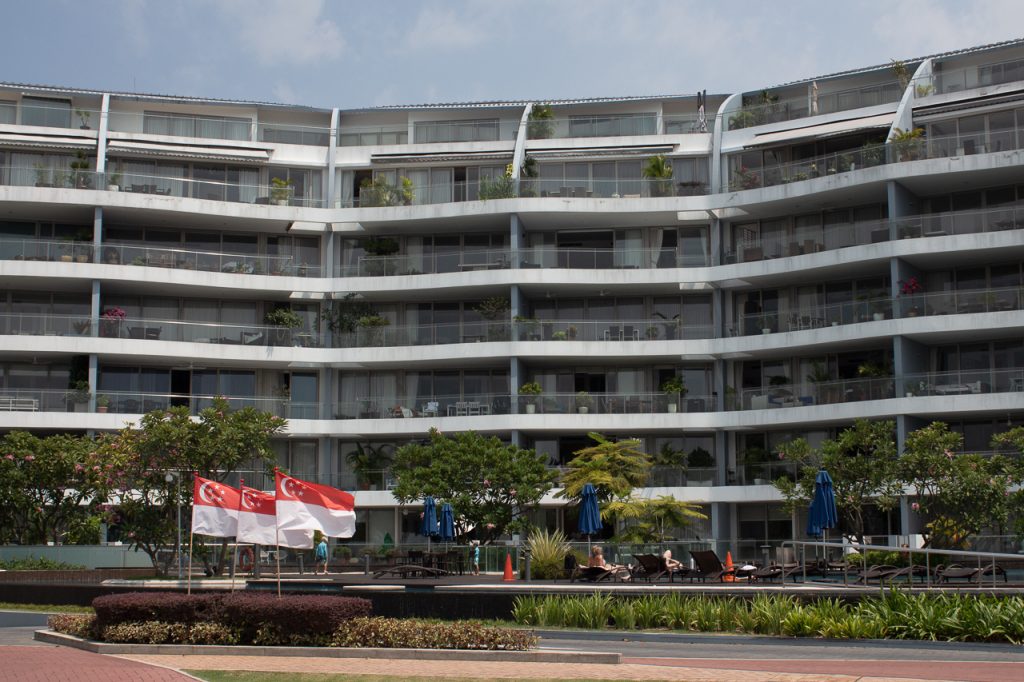
As Singapore’s first and only gated residential community, they run a tight ship. Getting into North Cove required surrendering our car plate number and some innocent puppy dog eyes. But entering South Cove is impossible unless you have a specific address to visit. I wasn’t even allowed to turn around in the roundabout past the gantry, I had to fumble on a three point turn to get back to civilisation.
“I’m not gonna lie, they give you absolutely zero inch for anything,” Joshua tells me.
He recalls the countless times he’s misplaced his Sentosa card and been refused entry despite being a regular. He also complains about the preposterous number of gates within South Cove itself that requires card access, even ones that are about waist-high tall.
The absurdity of the Cove’s security is crystalised in a story Joshua tells me. South Cove is connected to Tanjong Beach—which would explain its liveliness compared to the North tucked away in a corner—and he had a friend who left his hat back at the beach.
“There’s a gate separating South Cove and Tanjong Beach, and over there was this BMW with 4-5 guys who said they were security. They told my friend that only residents were allowed to use the gate. So he was instructed to walk through all of South Cove, take the bus to VivoCity, take the monorail from there to Resorts World, then take the bus to Tanjong Beach, and finally walk down Tanjong Beach.”
“It was the way security so casually suggested an hour and a half journey,” he tells me as we burst into raucous laughter. “That’s the stupidest thing I’ve ever heard.”
Back at North Cove, my photographer and I are camped in the driveway of an uninhabited house we’ve appropriated as our base. A patrol car passes by none the wiser, and our hearts pulse with adrenaline.
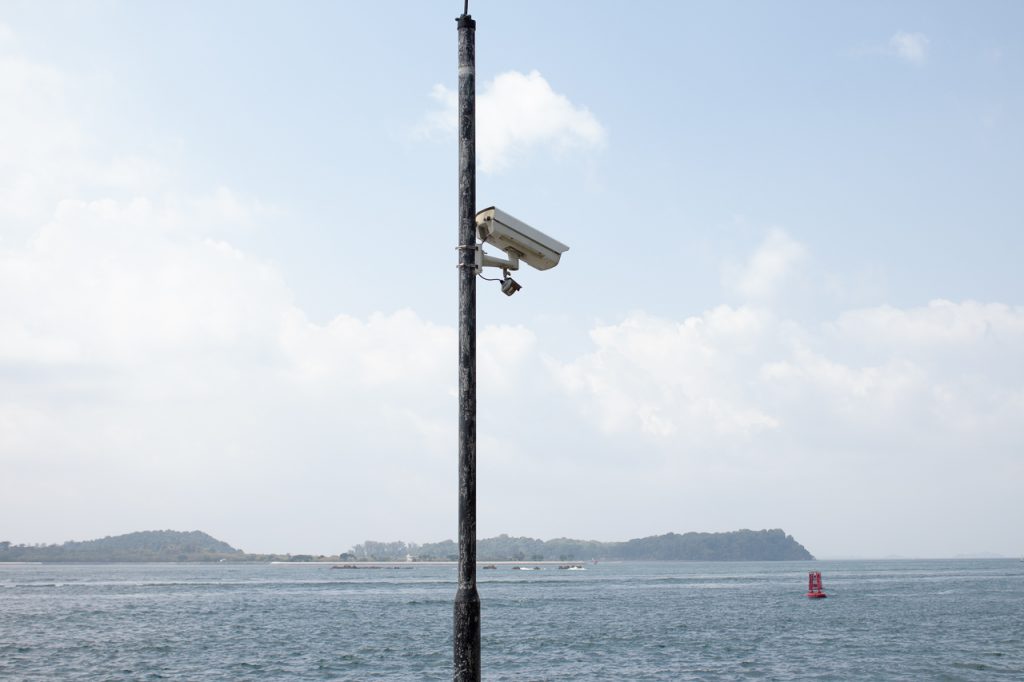
Joshua agrees that the abundance of cameras is a key feature of the Cove. But there weren’t so many when his family first moved in. Management has steadily increased the number over the years.
When I ask him if it makes him feel uncomfortable, he shrugs. “People just go about their daily lives,” he tells me. It reminds me of the parable of the boiling frog, of the way we acclimate to gradual threats easier than sudden ones.
Because being thrust into the hell of an empty North Cove littered with cameras triggers my paranoia. Singapore is the 3rd most surveilled city outside of China—11th in the world—so we’re no strangers to cameras. But they become blindingly obvious when no one’s around.
The atmosphere is taut with fear, like existing in a Black Mirror episode before the gruesome twist. One could easily imagine the tremolo of violins lingering in the background, peppered with the occasional high-pitched pizzicato.
“They’re constantly watching,” Joshua assures me solemnly. He recounts instances where sitting by the ocean was misconstrued as illegal fishing or other unsavoury activities, with security pulling up to question them. The question of trading privacy for security is a no brainer over here.
The syzygy of loneliness, security and surveillance turns the vastness of space into an oppressive prison. If Sentosa Cove’s supposed to be some Shangri-La, it’s a farcical, grotesque imitation of one.

Just like the rest of us—with consumerism, duh.
Remember the three islands I mentioned earlier? Each of them are their own mini-resort, with their own themes and quirks. They feature the fanciest, most eccentric architecture and furniture you can find in the Cove.
Deep in the horseshoe’s nook, Coral Island is forged in steel. It houses an impressive array of avant-garde metallic sculptures, from humans to cranes to abstract interlocking shapes. We spotted North Cove’s only Tesla, as well as a stone Buddha on a driveway staring us down. Besides being an exorbitant waste of money, it’s nothing particularly offensive.
However, these islands are often hit or miss. Because Paradise Island is a trip.

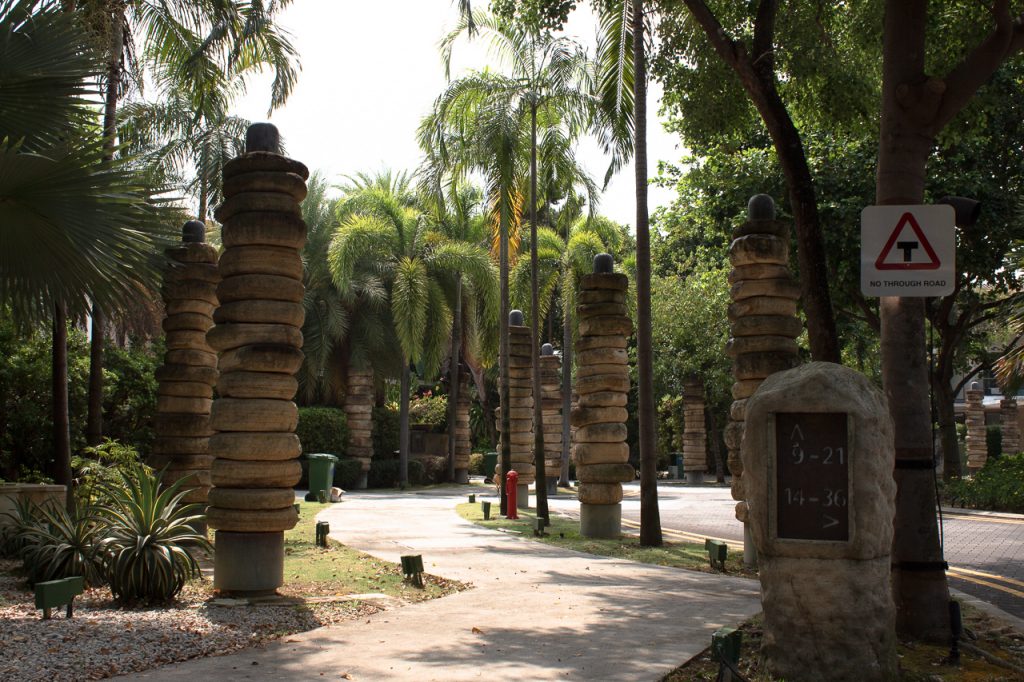
No really, what is this? A pretentious reimagining of Stonehenge? The aftermath of a golem family dinner at Sushi Express? Another cavalcade of phallic structures signifying the pride and fall of man?
The problem with Paradise Island’s aesthetic is that it’s trying too hard to be ‘exotic’. The plantation of palm trees and faux cairns aren’t coherent unless you’re envisioning a tropical Mayan-Aztec conglomerate straight from Indiana Jones’ haemorrhage. If this is the wet dream that gets telepathically transmitted into billionaires, I’d rather choose destitution thank you very much.
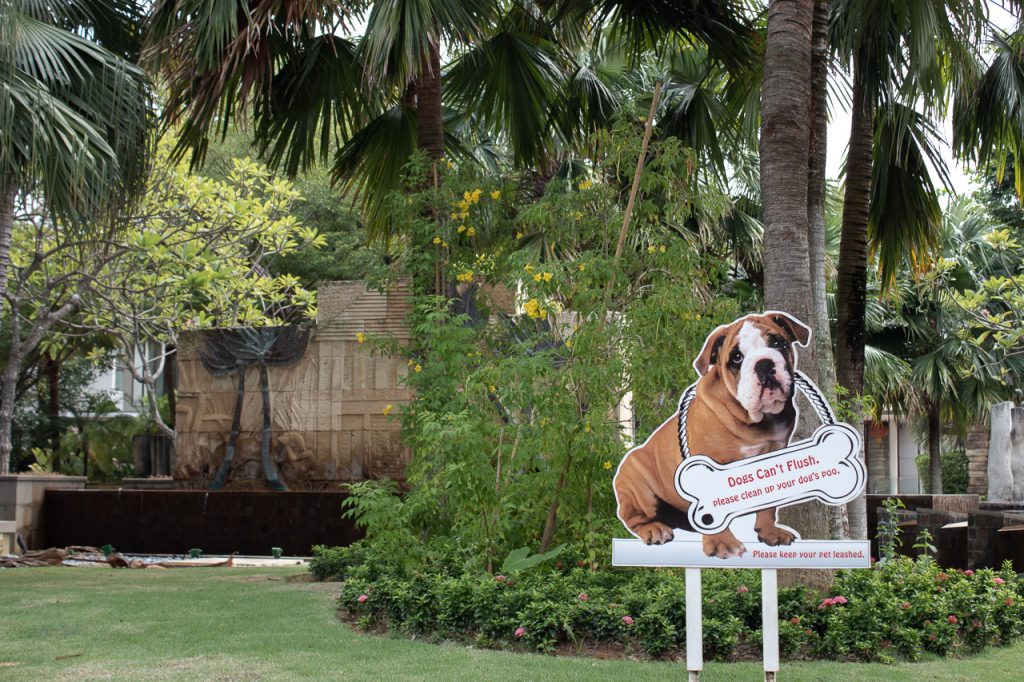
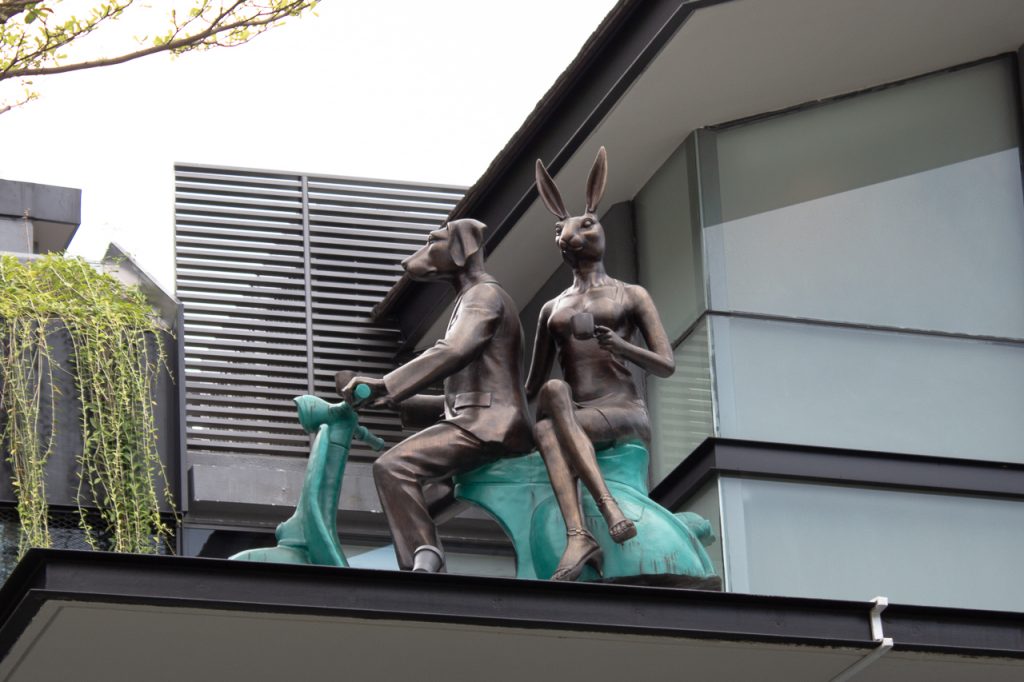
All I can say is I’m glad the furries have representation in the highest echelons of society.
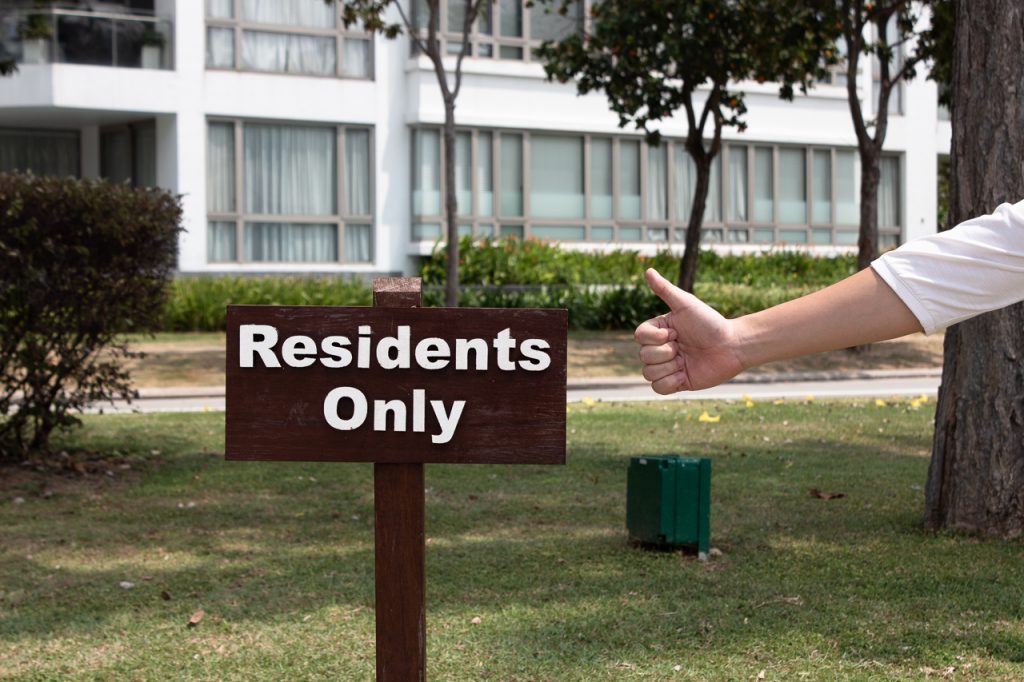
The alienation of capitalism comes full circle because money can buy you space and luxury but not *gasps* happiness. You can’t lead a fulfilled life if you’re surrounded by possessions and land worth more than the GDP of Tuvalu but not a single human soul nearby to interact with. The gap between Sentosa Cove’s expectations and reality shows how difficult it is to form a community when you’re unanchored. Being privileged with the mobility to travel and live anywhere allows you to have many houses, but it’s difficult to find a home.
We’re social creatures first and foremost. Our wealthiest would do well to understand that, lest they follow the tragedy of Gatsby.
North Cove might rot into obsolescence, marked as a failed experiment, but things are looking up in the South. Joshua tells me about the nascent community in his condominium, a tiny group of friends who he can talk to and spend time with whenever.
And the eccentric billionaire with his Egyptian art gallery? He’s trying to lead community efforts with landscaping and beautifying common areas. Joshua informs me that said billionaire just recently hosted a gathering for all the residents of South Cove. There was a live band performing and all while everyone had a chill time.
But now I’m here wallowing in North Cove’s misery, and I paid $6 my editor won’t reimburse me to enter Sentosa, so is there anything redeeming at all?
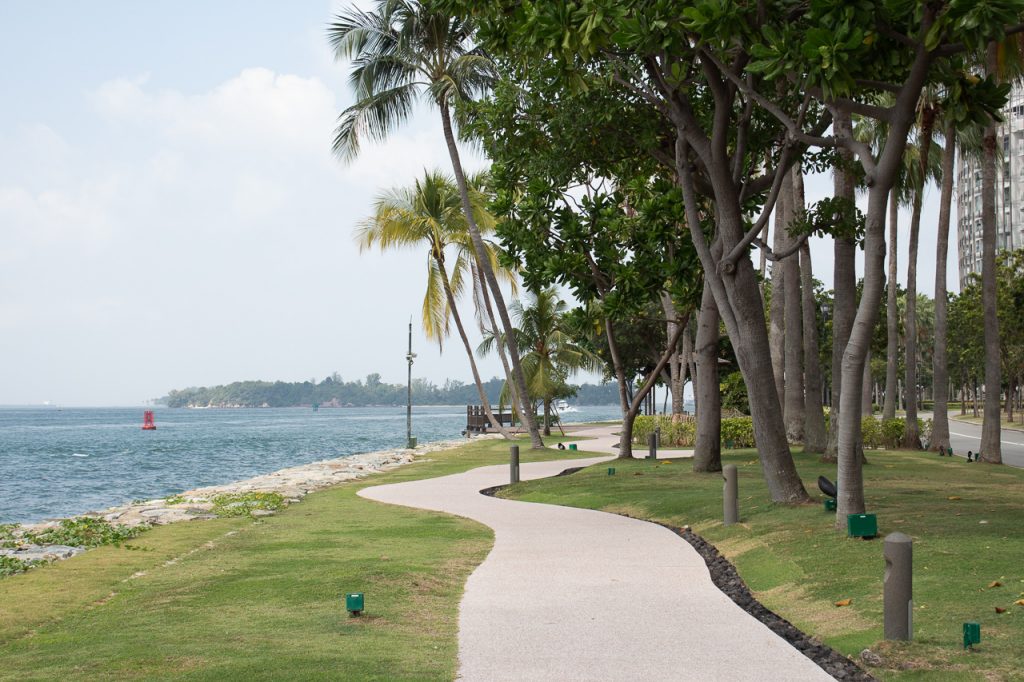
I pick a spot to sit, look into the blue, and hope to hear Morgan Freeman’s voice whispering in the wind.
